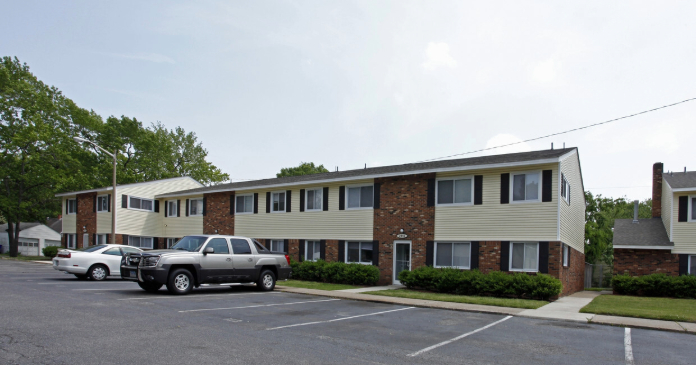Apartment owners and managers have retooled their Internet strategies to allow prospective renters to visit apartment communities online, see pricing and availability that changes daily–thanks to integrated revenue management systems–and choose a unit, complete the screening and application processes and pay processing fees with the click of a mouse.
Their technology investments are paying off. Mid-America Apartment Communities, for instance, is seeing an explosion of Internet- generated traffic. The contacts from potential renters the multifamily REIT received via the Internet and email in Q1 2008 more than doubled year-over-year. In addition, online community portals, or Intranets, enable residents to order and pay for utilities, request maintenance and make one-time or continuing rent payments from anywhere they have access to a computer and a modem.
“The next frontiers in the automation evolution are e-signatures and document management,” said David Cardwell, National Multi Housing Council (NMHC) VP of capital markets and technology. “Companies want to move to that because of the hundreds of thousands, if not millions of pages of documents related to leases they must process. If that information can be done electronically and the process fits within the purviews of the federal electronic signature laws, it means they can do away with file storage issues.”
Technology pioneer Archstone (formerly Archstone-Smith), which dropped the Smith from its name after the former public REIT was acquired in May 2007 by a joint venture of Tishman Speyer and Lehman Bros., started using an automated system in 2003 through its online tenant portal and the Inuit/MRI property management software. Earlier this year the company took the online leasing process to a whole new level, allowing renters to sign and execute legally binding leases online with validity equal to a manual signature, then storing the documents in a secure, but easily accessible, electronic document management system.
“We promoted the new version of our Web site, which includes the capability for e-signature, at the end of April. The technical capability is now fully there, we just have to go through the site- level changes and management training activities,” said Archstone Group VP Donald Davidoff of the market-by-market training in progress across the company’s 86,389-unit portfolio located in high-barrier-to- entry markets on both coasts. He expects the e-signature program, intended to eliminate the company’s use of the paper lease, to be completely rolled out within the next few months.
LeasingDesk, a wholly owned subsidiary of RealPage Inc., last year introduced a new suite of applications that includes e-signature and document storage functions. Camden Property Trust currently is beta- testing that system through its OneSite integration and BRE Property Company and several other apartment companies are working with Yardi Systems Inc. to develop similar capabilities that will be proprietary to Yardi’s Voyager property management system.
Setting the standards
But it is the Multifamily Information and Transaction Standards (MITS) initiative that will help to make e-signature and other automation benchmarks an attainable reality for many more apartment companies. Founded in 2002 to address the need for a single set of multifamily housing industry data standards, and funded by more than 70-member apartment companies and technology provider firms, MITS is creating universal standards and extensible mark-up language (XML) architecture that will allow apartment companies’ property management systems and the software programs currently being developed and introduced by industry providers to more easily communicate with each other.
The NMHC serves as host for the MITS initiative effort and, in 2004, the National Apartment Association, a federation of 164 state and local affiliates, became MITS’ first trade association outreach member.
Thanks to the nine MITS standards developed so far, which cover a wide variety of apartment operations from resident screening to property marketing to physical asset management, software development firms continue to deliver more sophisticated products at lower cost and at a faster pace, and apartment firms can select best of breed software, knowing if it is MITS compliant, it will integrate into their existing systems, said Cardwell, noting that the next data transfer standard to be developed this year will be the MITS Collection Standard to manage information about delinquent lease payments and residents who leave properties without paying rent.
“We currently are working through the lease application standard. The committee developing that standard is in the process of reviewing the final draft and then we will begin work next month on a standard to facilitate collections. That one will build on the work that was done on an earlier standard regarding payments and resident transaction activity,” he said in May. A number of apartment companies have submitted sample documentation to facilitate the effort.
Multihousing collections go green
Apartment companies like Mid-America Apartment Communities, Camden Property Trust, Village Green Companies, The Benchmark Group, ZOM Residential and Steven D. Bell & Company already are reducing paperwork and improving production at site and regional levels by integrating debt collections into their property management systems.
“Currently, our bad debt collections are handled by two different companies and we are integrated with both,” said James Maclin, VP of corporate services for Mid-America, a multifamily REIT that currently owns 41,120 apartment units throughout the Sunbelt.
“We are definitely experiencing better performance in this area and we attribute that to our integrations through our MRI property management system. For instance, in our relationship with Hunter Warfield, the bad debts or bad accounts of people who skip owing us money are automatically sent to the collection agency without any interaction from our property teams. That automated process creates efficiency and also helps with standardization. We pick a date on which all bad debt collections are sent to the collection agency and create consistencies in that process, which also helps us from a fair housing standpoint, to make sure we are treating everyone the same.
Those efficiencies and standardization in our operating platform are because of the integrations, and are seeing the benefit to our bottom line,” said Maclin.
Mid-America CEO Eric Bolton reported during the REIT’s Q1 2008 earnings call seeing an overall improvement in net collection loss over the previous year. “While uncollected rents held steady in Q1 compared to last year at 1.1 percent of total net potential rent, as a result of additional system enhancements and recently introduced procedural changes to the debt collection process, the recovery of prior month collections and collection agency recoveries improved a significant 28 percent over last year and, as a result, our total net collection loss in Q1 improved to just four-tenths of one percent, which is down from five-tenths of one percent last year.”
“Those results mark the strongest net collections performance the REIT has captured in its 14-year history and are a direct example of an area where retooled systems and practices have made a significant positive impact to performance,” he said.
The Benchmark Group, which manages a portfolio of more than 6,000 apartment units in 11 states, has been utilizing debt collections integration via RealPage’s OneSite software for about a year and has seen a significant improvement in liquidation results.
“Automation between RealPage’s OneSite property management software and Hunter Warfield’s collection process increased Benchmark’s rate of collection by 10 to 12 percent and Site Data Exchange (SDE) between Onesite and Hunter Warfield virtually eliminated the manual process. The ‘click-and-send’ collection indicator provides the site an effortless initiation of the collection process,” said Glen Ignasiak, director, residential information systems at The Benchmark Group.
Hunter Warfield integrates with most property management systems, including Real Page’s OneSite and Intuit’s MRI and is finalizing its integration with AMSI and Yardi’s Voyager. Integration enables property managers to tag delinquent accounts and transfer them automatically to Hunter Warfield, which then can begin the collections process.
Typically, a small application is developed and integrated into the property management software to track which accounts should be sent to collections. The software is configured individually for each community to monitor all residents with balances unpaid past the specified number of days after move-out. Information pertinent to those residents is then extracted from the database and packaged in an XML file, which is sent to Hunter Warfield on a nightly basis, making the collection process seamless.
The integration process provides many benefits to the apartment companies and property management firms who use it, including better control of receivables at the regional and corporate levels and increased production time at the site level. Typically it takes 15 to 20 minutes to gather and execute the necessary paperwork for each debtor file. When an apartment company is submitting hundreds of accounts per month, the processing cost becomes significant.
“Integration is a two-way street,” said Hunter Warfield Principal Steve Sobota, who entered the debt collection business in 1979, when he took on a summer job to pay for his college education. In 1983, he co-founded debt collection firm Pierce Hamilton & Stern and by 2005 the company had grown from a small business to a firm handling more than $1 billion in debt. After 22 years of success, the company evolved into two separate organizations and Hunter Warfield was formed in Tampa, Fla.
“A debt collection agency has to have the technological ability to extract all of the information needed for the collection effort. It is time consuming and expensive. As an example, we’ve invested tens of thousands of dollars and about 18 months of programming in order to be able to integrate with these software companies and our clients. The payoff is that we are able to collect more money faster and without all the paperwork previously needed,” said Sobota.
The company attributes much of its recent growth to integration and new revenue generating technology. Year over year in 2007, Hunter Warfield increased the rate of liquidation for its clients by 124 percent and is the first national multifamily collection firm to tack on interest to its clients’ bad debt through an automated process–not an easy task since every state has its own laws governing interest collection.
Interest added
Last October, the company completed a program that enables Hunter Warfield to charge the legal rate of interest to its clients’ debtors in all 50 states. “Our software development means that no paperwork or human involvement is necessary on the part of our clients. We handle all of the details through system automation,” said Alex Sherwood, VP of technology for Hunter Warfield.
The program utilizes a simple interest calculation, meaning a debt placed with Hunter Warfield increases each day it goes unpaid. When collection is successful, the additional interest helps to offset the net cost of the collection process for the property owner.
“If a former resident chooses to resolve their indebtedness two years after the fact, they will pay a premium to do it. Time has a price,” said Sobota, explaining that the company gives debtors a chance to save on interest charges by paying within thirty days of initial notification.”Each day beyond that, interest accrues. This, coupled with credit bureau reporting, is a big motivation for debtors to pay sooner rather than later,” said Sobota. Hunter Warfield’s system uses the interest rate stipulated in the leasing contract, but, in the absence of a contractual rate, defaults to the state-mandated rate.
The new interest rate feature is part of Hunter Warfield’s plan to reduce the debt collection cycle to two to three months from six to nine months. “Our data shows that our clients should experience an increase in revenue between four and seven percent annually, just from our new interest rate program,” said Sobota.
















